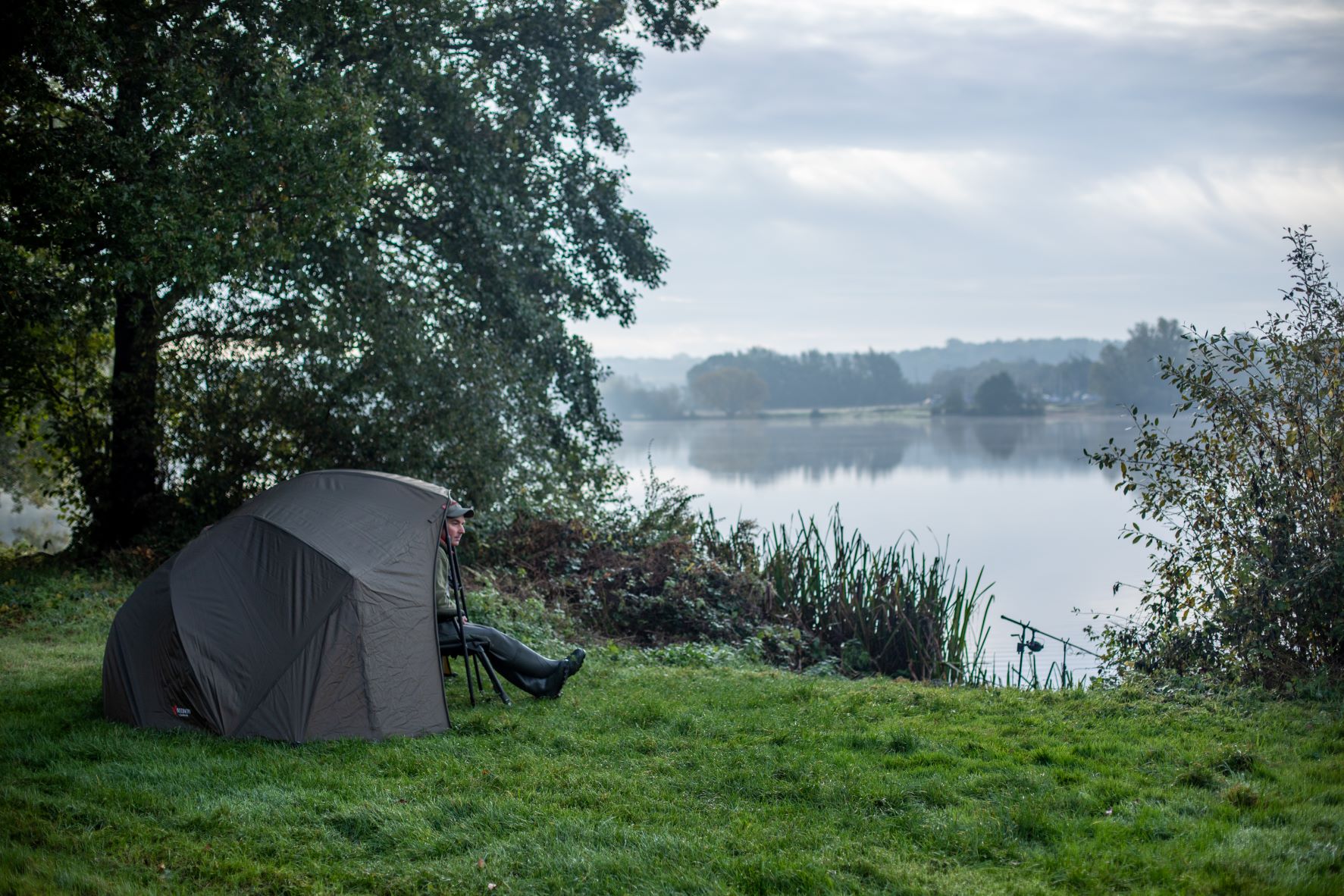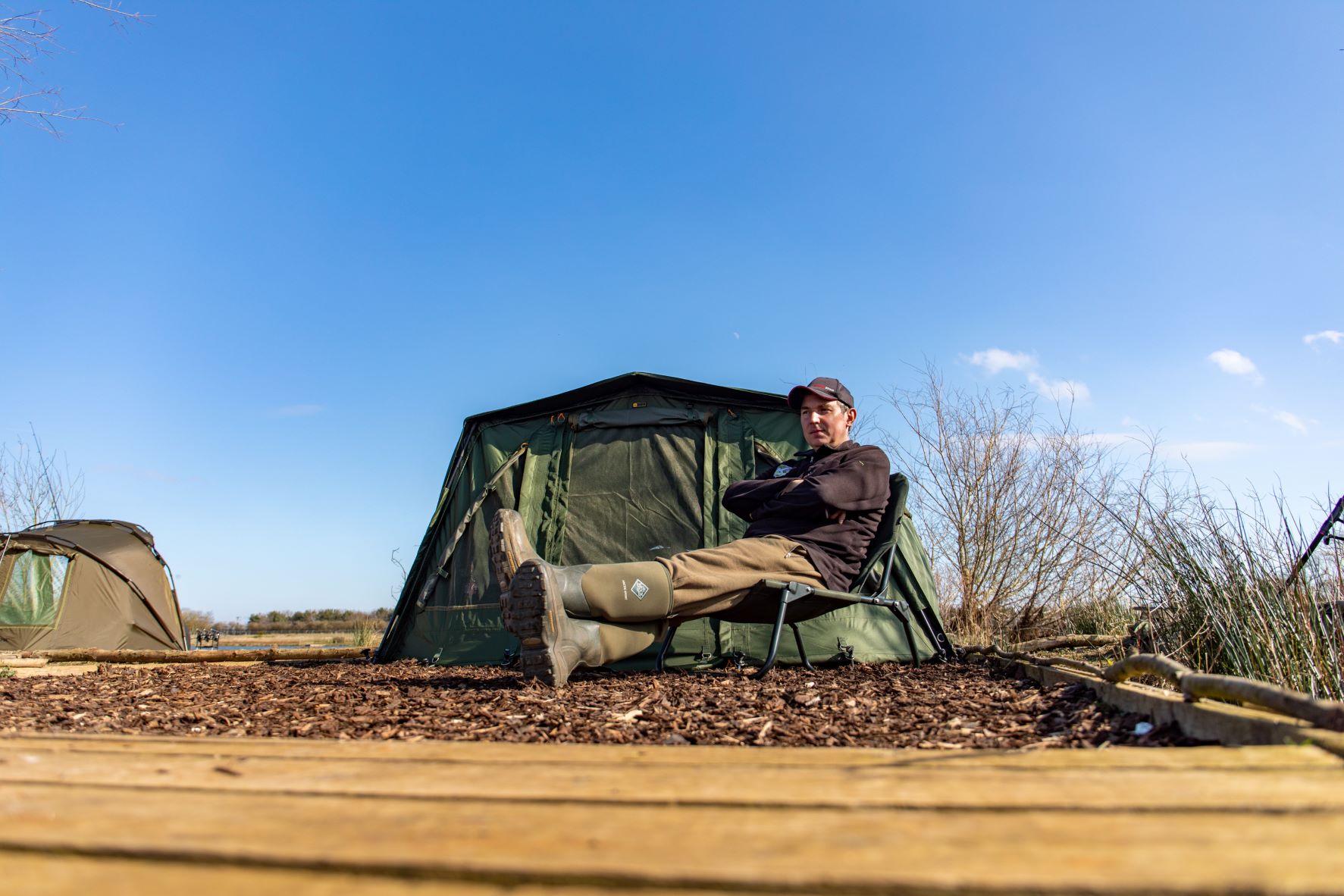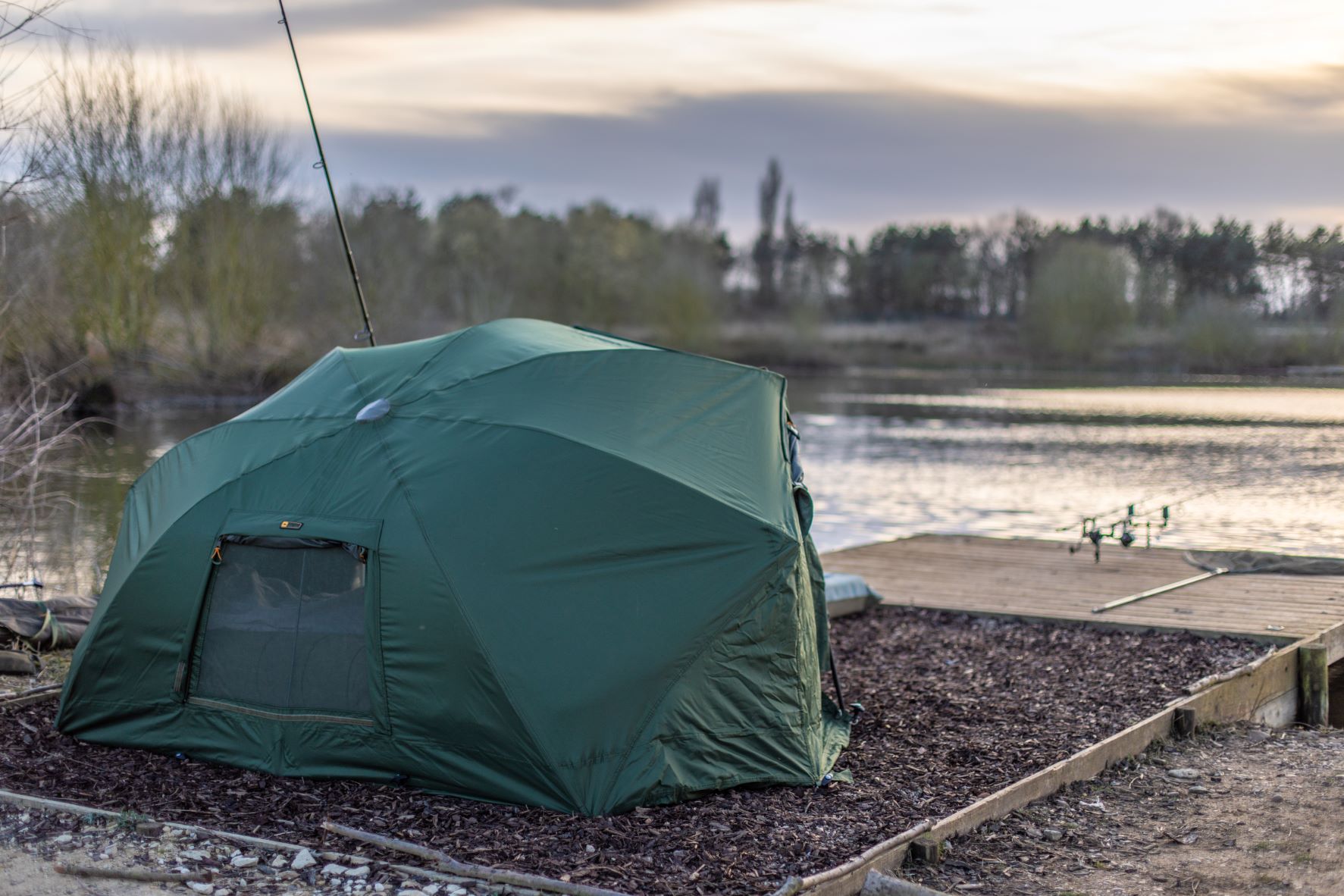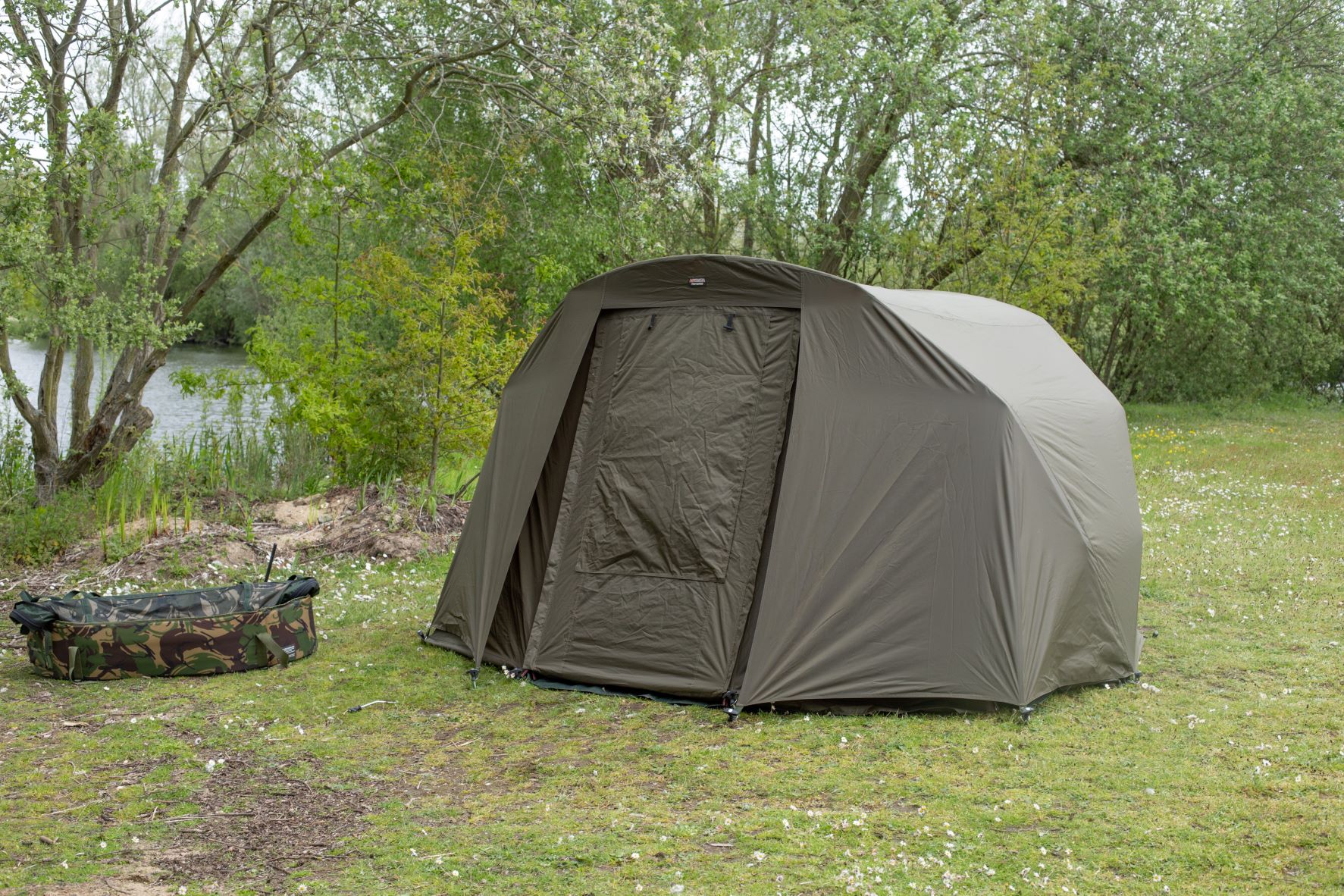An Angler's Buying Guide to Bivvies and Shelters

Try as you might, even with all the skill in the world, there’s still nothing you can do about the Great British elements. You can watch the forecast as long as you like, but it often takes little more than a freak change in the weather to wholly ruin your long-awaited angling session before it even really gets off the ground. It’s a problem so many anglers are all-too-familiar with and spending days in dire British weather is something that, unfortunately, comes with the territory. However, the days of packing up at the slightest change in the weather should be long gone.
Armed with the most advanced designs in bivvies and shelters, there’s really nothing nature can throw at you that cannot be taken in your stride. Step out with confidence and refuse to let the weather put a dampener on your spirits (or your day) with superior quality coverings available to the angling world.
What is the Best Shelter for Fishing?
Fishing shelters range from the classic super-brolly system right through to the latest advances in long session bivvy designs. However, with so many different bivvy and shelter options out there, each of which claims to be the best in its field, it can be hard going trying to decide on the perfect shelter for your needs.
Those opting for a short session usually pack light and go with a fishing brolly for shade from the sun and protection from the rain and wind. Those opting for a longer stay go with 1 man bivvies and shelters that fit a bedchair and some of your tackle collection, whereas at the top tier anglers will get larger bivvies (2 man) with an overwrap, door extensions and more.
What is a Shelter and a Bivvy?
It is important to make the distinction between a shelter and a bivvy.
Fishing Shelter: Most often called a brolly or a brolly system in the angling world and the three terms are generally used interchangeably. These tend to be used primarily for shorter sessions and quick overnight summer angling.
Bivvies: More like traditional tents in the sense that they have a fitted door front and ribbed construction. These tend to be used for longer sessions and, although plenty of anglers will use a bivvy for a quick overnight session, you’ll rarely see someone erect a bivvy if they are just planning on spending the afternoon and evening at the water’s edge.


What To Look for in a Fishing Bivvy
Regardless of whether you’re looking for a shelter or a bivvy, you’ll want to look out for a couple of things in the product description. Bivvy gets its name from the improvised camping shelters, or ‘bivouacs’, popular among mountaineers of old. However, the modern angling bivvy is significantly more high-tech than these original improvisations and the majority of them allow you to enjoy your time on the bank in relative luxury.
Materials and Components
The fabric that the shelter or bivvy is made from is absolutely integral to its quality. After all, it is this fabric that is going to keep the wind and the rain off, so you need to ensure that it is waterproof and durable. Most bivvies and shelters will use a high denier nylon fabric.
Denier of Bivvy Material
The word denier refers to the fineness or density of the fabric, so the higher the number is the thicker the fabric will be. Most of the bivvies and shelters tend to have 210 denier fabric, which is plenty enough to hold off the worst of the cold and rain.
Some brands use their own specially designed fabric, which they have developed especially for anglers. Aquatexx (used by Trakker and Aqua in their top-end bivvies and shelters) and Climatex (used by Chub) are two such examples of these.
Breathability & Waterproofing
Most shelters use fabrics that claim a certain level of breathability as well as the classic waterproof rating. If a fabric is breathable as well as waterproof, it significantly reduces the risk of condensation forming inside the bivvy, protecting you from dampness on the inside as well as the outside. You will find many bivvies that come with ventilation systems with window and door options that sport mesh instead of PVC to allow extra air in your bivvy.


Footprint of a Bivvy
The word ‘footprint’ refers to the amount of space on the ground the bivvy or shelter takes up. Most manufacturers try to minimise this footprint (especially if they are trying to create a compact shelter solution) whilst maximising the internal space available.
Bivvy Structure
Shelters tend to be based on the structure of a large brolly (hence their alternative names) with extended storm sides. Bivvies, on the other hand, have a lot of variation in appearance. Some you’ll find will have four ribs, some two, some will be short and squat, and others will be tall and deep.
Rib Strucure of a Bivvy
The rib structure of the bivvy or shelter really comes into play for making a compact exterior and maximised interior. The ribs or poles are almost as important as the main fabric, as these provide the shape of the bivvy. They are often manufactured from an aluminium based metal, although you will find some variations across the brands. So long as the material used is strong, durable, and lightweight, the bivvy should be ideal for your needs.


Flatback Structures
A good place to start is making sure that your bivvy offers a relatively flat back. This ensures that you can push your bedchair far back into your bivvy, giving you the maximum amount of floor space for the storage of your luggage, cooking equipment, and other angling essentials.
One or Two Man? - Sizing
You often have the option between one and two-man bivvies, whereas shelters are exclusively one man due to their compact size. Two-man bivvies are ideal if you’re tackling a large European swim when it is more than possible to have two anglers in the same area without disturbing one another (or your fish). They are also great if you like to take a loved one down to the bank with you – for photo-taking and company rather than because they enjoy fishing.
Two-man bivvies are also used by anglers who like to be prepared for all eventualities, as well as anglers who spend upwards of a week on the bank at a time, as they provide loads of space for all your extra gear. One man bivvies have ample room for all the equipment you need on your average long weekend angling session. You’ll find some large one-man bivvies in our store that are almost the same size as small two-man options.


What Should Come with my Bivvy?
Another thing to look out for when you’re investing in a bivvy or shelter is the gear it comes with. Most of the bivvies and shelters we stock come with their own heavy-duty groundsheets, T-pegs, and carry bags.
Groundsheets are vital, if you’re looking to enjoy more than fair-weather fishing, as they keep the damp out from under the bivvy and give you a mud-free zone on torrential days.
T-pegs are equally important as they hold your bivvy and shelter in position. This is especially vital on sloping banks, when you don’t want your gear slowly sliding towards the water, and in high winds.
Carry bags are fairly self-explanatory: they give you a way of transporting your gear to and from the bank, as well as making sure that you can keep everything together nice and neatly.
Now that you know what to look out for when you’re browsing our range, we’re going to help you to further refine your search so you can walk away with the perfect product for you.
Short Session Angling in Shelters
As we’ve already mentioned, if you’re someone who heads down to the bank for a short number of hours then it is unlikely that you’ll want to take a full on bivvy with you. However, if you’re an angler who also likes to be out on the bank in all conditions you’ll be well aware that even the most high-tech of waterproofs simply cannot cut the mustard – especially as they cannot possibly keep you and your gear dry at the same time. This is where a shelter comes in extremely useful.
What To Look For in A Fishing Shelter
Shelters give you somewhere to sit away from the wind and the rain, as well as giving you the option of tucking your gear away from the elements too. They are ideal for the angler who likes to survey an area before settling down, as well as the angler who likes to know that they can move further around the corner at a moment’s notice should the situation on the water change.
Lightweight & Compact
Fishing shelters are generally wide enough to accommodate a bedchair, at a pinch, in case you do want to do a short summer overnighter, and they are tall enough for you to sit in comfortably without your vision being obstructed.
Structure
For the most part, the shelters we have to offer are based on a large open brolly rested on the ground, with extensions on the sides to offer additional protection from the wind.


Entrance
Most of the shelters we stock tend to have an open front and, as such, are intended just to keep the rain and worst of the wind off you and your tackle. They literally shelter you from the elements.
Pack Down & Setup Times
With many employing nifty devices to quicken the process further, shelters can be a quicker option for setting up with fewer parts often needing connecting.
Colours
If you enjoy sea fishing then you’ll also be au fait with the world of shelters. Tall and bold coloured shelters are the name of the game in beach or surf fishing, as you don’t need to worry about blending in with your surroundings so as not to scare a nervous fish. Carp and predator fishing shelters tend to come in greens or browns to match the background of the venue and therefore more hidden from the fish.
Ankle Skirts
Many coarse and sea fishing shelters tend to come with extended sand skirts, in order to stop the wind from whipping the sand up around your ankles.
What Else Do I Need for Protection on the Bank?
For anglers who want the lightweight freedom of a shelter as well as the 360-degree protection of a bivvy, we also stock a range of overwraps. These enable you to add a door to your shelter, keeping out the elements as well as affording you a little extra privacy. These help to retain heat inside your shelter, too, transforming it into a small bivvy that can be used for overnight angling all year round.
Adding a second skin to your bivvy significantly increases its heat-retaining capabilities, keeping you warmer when the weather is cooler. What’s more, an overwrap also reduces the risk of condensation forming inside the bivvy, too, which ensures that you stay drier and more comfortable for longer.


Other bivvy accessories that can make the interior more comforting are items such as bivvy mats that are perfect for placing muddy and damp footwear and clothing on so you don’t waterlog the inside of your shelter.
You can check out our list of Top 5 Bivvy accessories, here.
How Much Does a Bivvy or Fishing Shelter Cost?
At their most expensive, our shelters come in at just under £500, but you can also buy excellent budget brolly systems for approximately £40. If you want a bivvy you can stand up in you are seriously limiting your options from the off, but if you’re looking for something wide and shallow then you will have a range of choices across the price spectrum. As far as prices go, for a top-end bivvy you can expect to part with in excess of £500. This will get you a relatively large and high-quality bit of kit that can see you through a lifetime on the bank with ease.
At the other end of the spectrum, anything between £60 and £100 will get you a compact bivvy perfect for year-round use in short weekend sessions. Most anglers pitch up somewhere in the middle, achieving that perfect compromise between durability and value for money. If you do want to splash out on a high-end bit of kit that will last you a lifetime then you can always use our direct finance option, which offers interest-free finance on any purchase that is in excess of £300.

